Of course, magazines have to sell stories – and superlatives always are a good argument in this case. People just love to hear about the biggest, oldest, and most spectacular. And what could be more spectecular than a headline like “The Oldest Temples in the World”? That’s how you sell a find, don’t you? Yet, as scientists we need to show some healthy reservation – in particular when dealing with such phrases and terms which obviously have developed a certain history on their own. It’s all too easy to make up a good story or ‘hypothesis’, but substantiating such proposition is where real research actually starts.
Against the background of the historical definition of ancient Roman or Greek or Near Eastern temples for instance, this peculiar type of building implicitly forms places to worship a deity or deities in our language use – the existence of this concept of ‘divinity’ is crucial to the temple as home of a god or goddesses in antiquity. It is a futile task trying to answer this complex question based on the archaeological record exclusively. We know to identify the temples of ancient Rome and Greece and the Near East and to name the gods these were housing due to the written record those cultures have left to us. Delving deep into the prehistory of the Anatolian Neolithic, however, confronts us with a sudden lack of any sources other than the material record. The challenge in relying to physically tangible sources solely to grasp rather spiritual concepts is obvious. Yet, the material culture of Göbekli Tepe and related sites and the elements of monumental architecture in particular may offer a lead worth following.
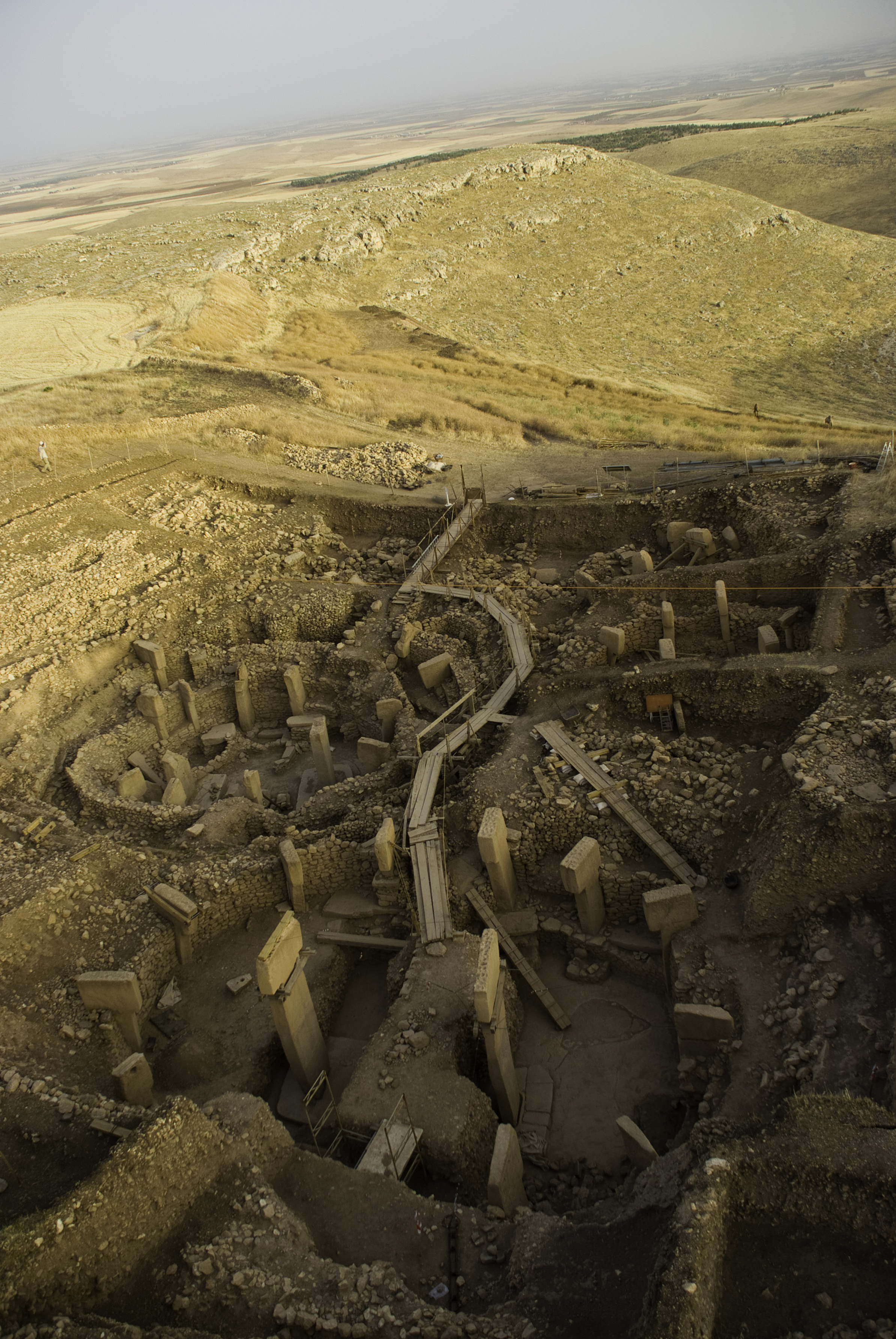
Main excavation area with monumental PPN A enclosures (Photo: N. Becker, DAI).
The T-shaped pillars forming the major and most prominent feature of Göbekli Tepe’s architecture need to play a crucial role in our observations here. While large and highly abstracted, they also clearly own human characteristics: some of these pillars show arms on their sides and hands brought together above the abdomen. There are elements of clothing depicted in relief as well: stola-like garments draped around pillars’ shoulders and fox-skin loincloths depicted dangling from belts. This emphasizes quite impressively that the T-pillars apparently have to be understood as monumental anthropomorphic sculptures. Most interestingly, however, is that they are always depicted faceless. There are no eyes, no nose or mouth present, these pillar-statues remain bereft of individuality on first glance – only to be distinguished, at least in the case of the central pillars of Enclosure D for example, by peculiar symbols below their heads – not unlike where one would wear necklaces. So, while still nameless to us, the Neolithic people may well have recognized who it was depicted here towering above them.
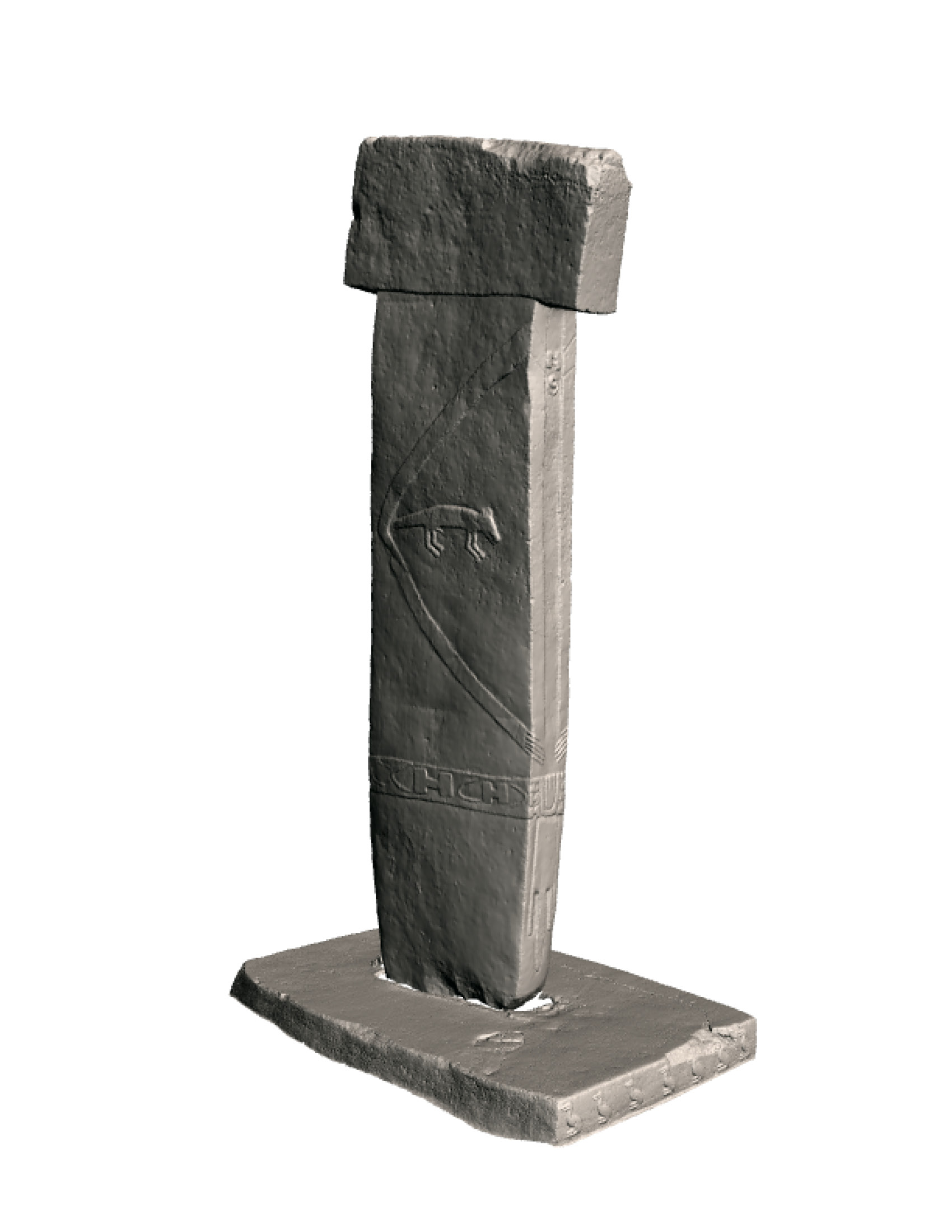
- (Photo: N. Becker, DAI)
- (Photos: N. Becker, DAI)
With a height of about 5.5 m it is particularly the T-pillars’ larger-than-life appearance which seems so remarkable – especially given that their highly abstract character is intentional and not to the result of deficient craftsmanship. Apart from the numerous animal sculptures uncovered at Göbekli Tepe, the so called ‘Urfa Man’ gives witness to Neolithic sculptors’ ability to portray the human body naturalistically. This oldest known statue of a man, about life-size, was found during construction work in the area of the Pre-Pottery Neolithic site of Urfa-Yeni Yol. In contrast to the cubic and faceless T-pillars, whose identity and meaning apparently seems to a different one, ‘Urfa Man’ has a face, his eyes depicted by segments of black obsidian sunk into deep holes (a mouth, however, is missing). From Göbekli Tepe there are known several limestone-heads, too. They have a breaking edge in the neck area indicating that they originally were part of larger statues much like ‘Urfa Man’ himself.
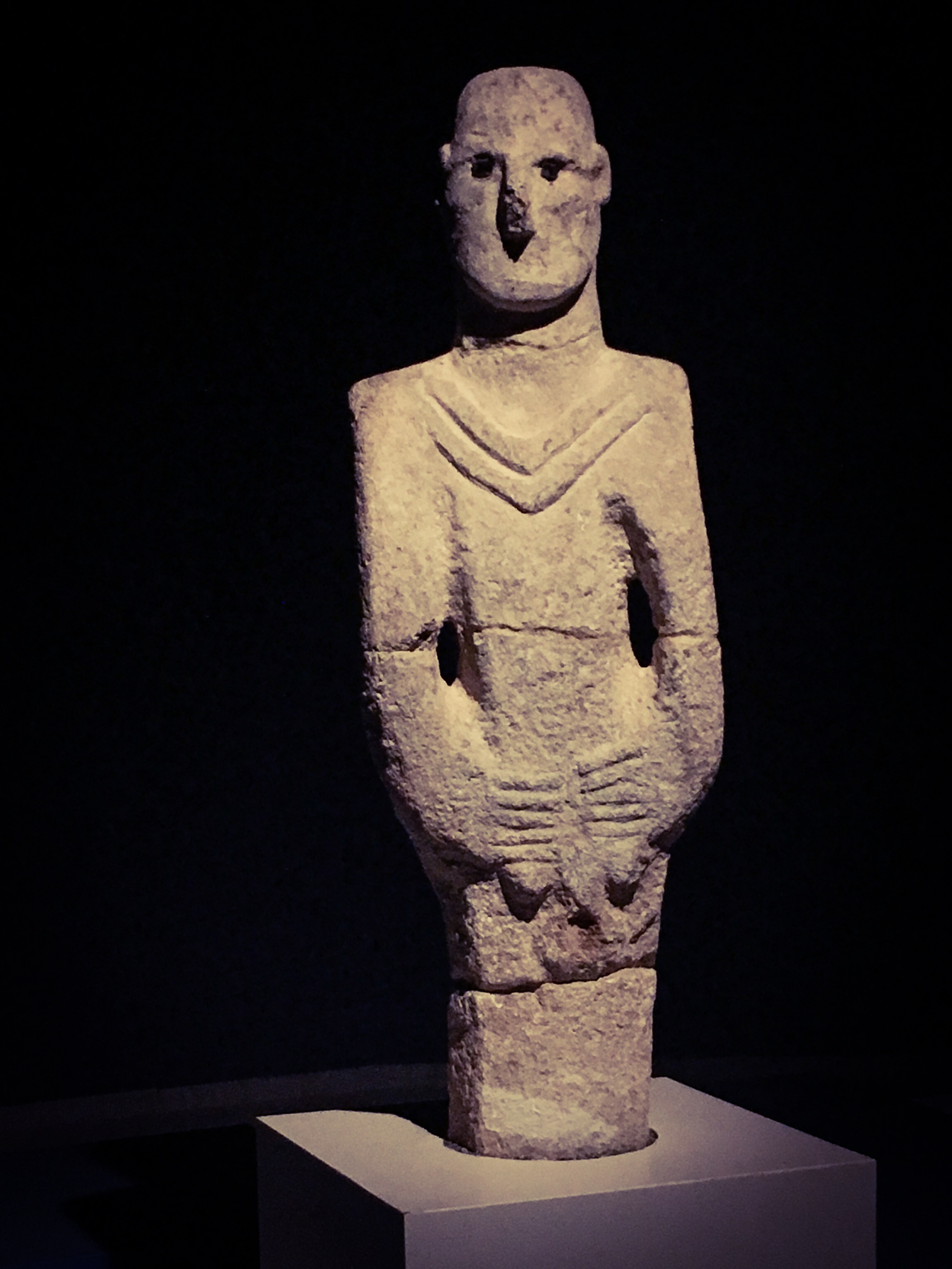
So-called Urfa Man is considered the oldest known life-sized sculpture of a man (Photo: J. Notroff, DAI).
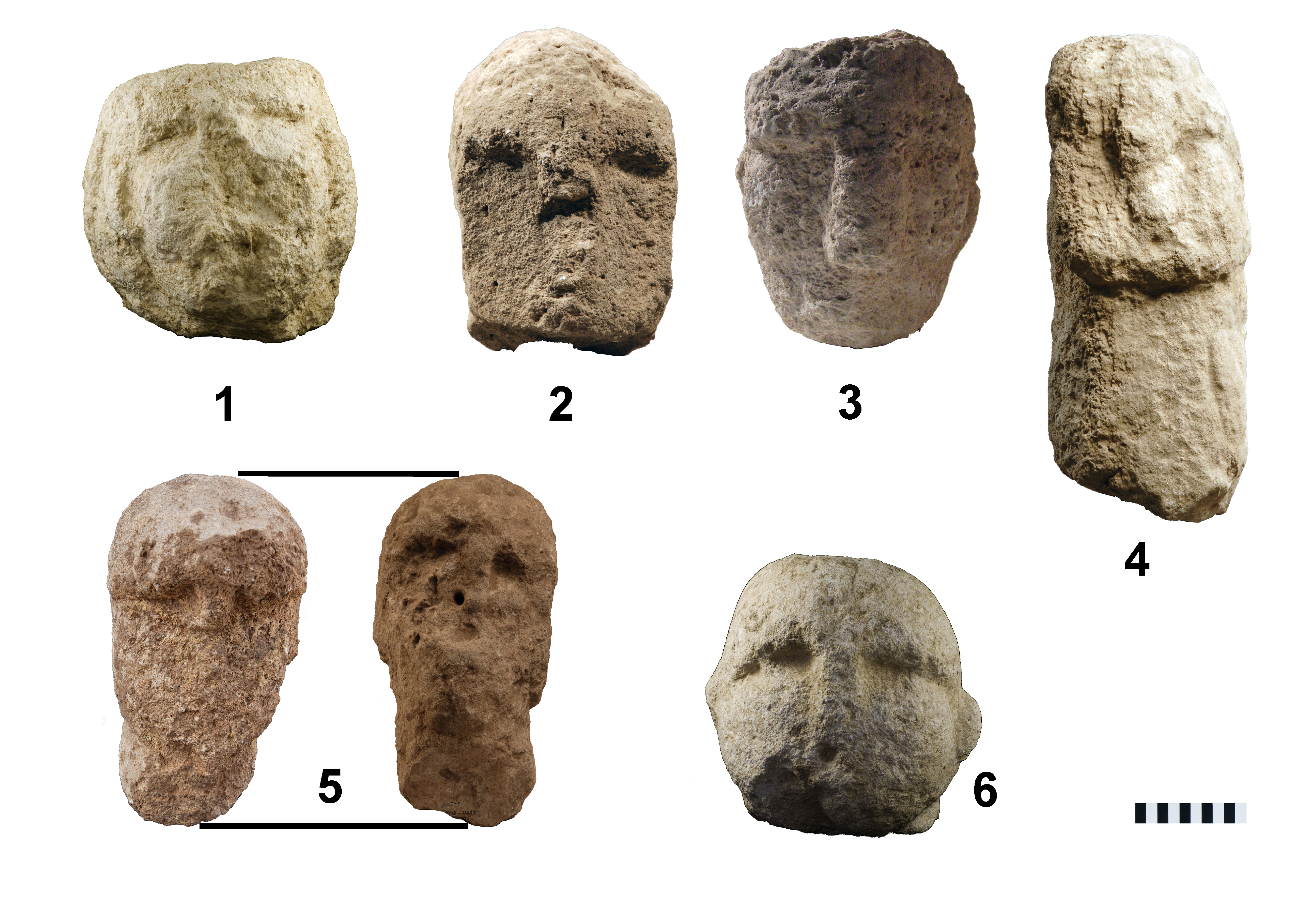
As already noted in the beginning, we know little of the beliefs these people might have followed, so it would seem rather bold to denote these monumental pillar-statues as personifications of ‘deities’. But faceless, larger than life and highly abstract, they clearly seem to be set on a quite different level than the naturalistic life-sized sculptures like ‘Urfa Man’ and the Göbekli Tepe stone heads. They seem to represent something more, supposedly something beyond the self-referential depiction of human beings. Together with the obviously narrative character of other depcitions on these T-pillars which clearly exceed simple decorative purposes, this perception feeds the impression that we are confronted here with a complex iconography – with mythological narrations probably even.
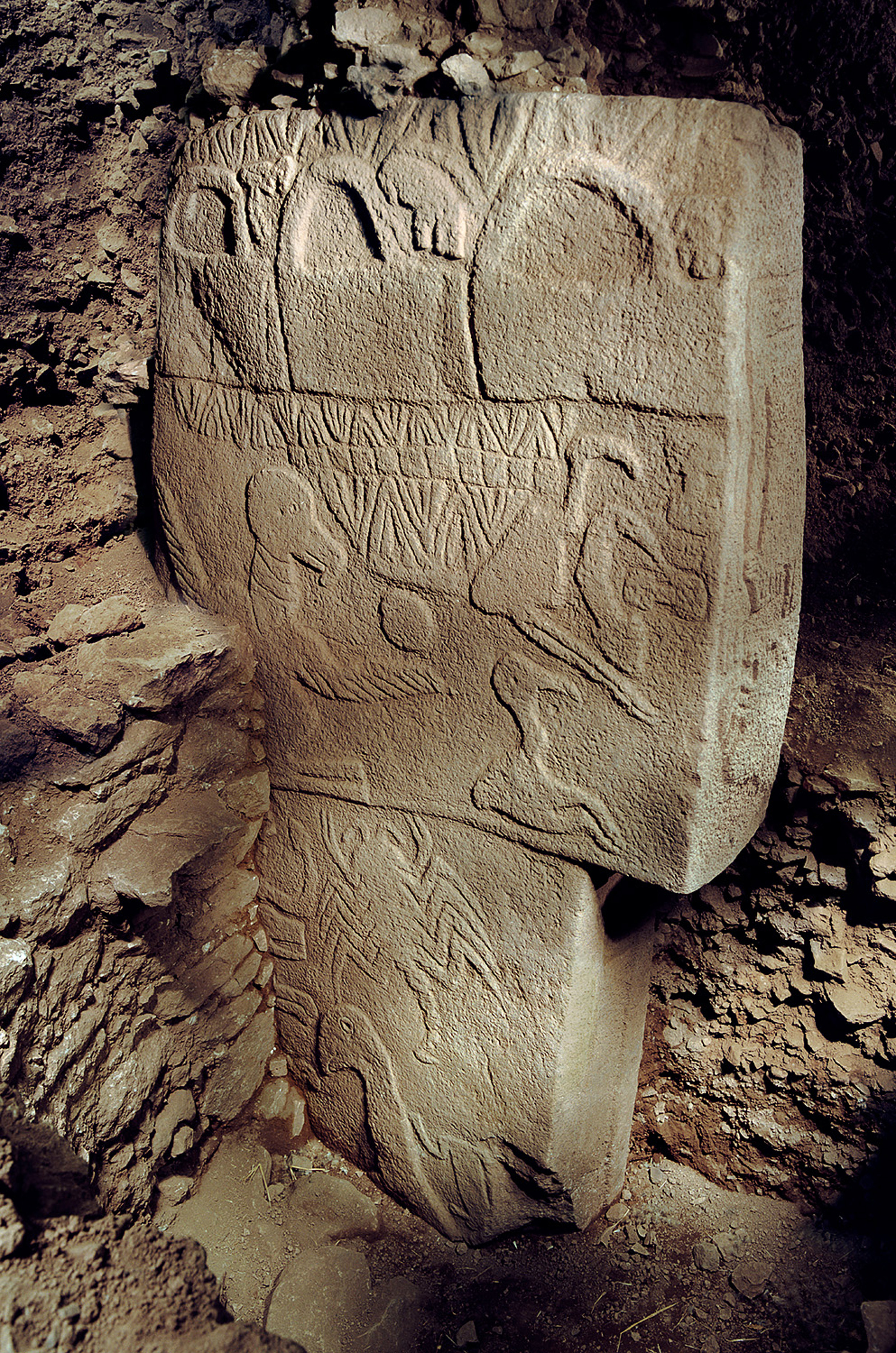
It is these T-pillars in particular which form the centre and most important element of the site of Göbekli Tepe, so they naturally become a strong argument in the interpretation of these enclosures as well. If we after all would like to call them ‘temples’ or still hesitate to use this term finally comes down to the definition one applies. But differing so noticeably from the well-known general types of contemporary settlement patterns (and also apparently lacking most of the material culture which is so typically for clearly domestic contexts), we confidently name these structures ‘communal’ or ‘special purpose buildings’ with all due scientifical propriety. This is even more compelling since apparently almost every settlement site of the period and region seems to have produced at least one comparable communal structure of similar design and layout. Only at Göbekli Tepe there is a noticeable cumulation of this peculiar building type – but this should be topic of another contribution.
Further reading
N. Becker, O. Dietrich, Th. Götzelt, Ç. Köksal-Schmidt, J. Notroff, K. Schmidt, Materialien zur Deutung der zentralen Pfeilerpaare des Göbekli Tepe und weiterer Orte des obermesopotamischen Frühneolithikums, Zeitschrift für Orient-Archäologie 5, 2012, 14-43.
O. Dietrich, J. Notroff, A sanctuary, or so fair a house? In defense of an archaeology of cult at Pre-Pottery Neolithic Göbekli Tepe, in: N. Lanerie (ed.), Defining the Sacred. Approaches to the Archaeology of Religion in the Near East. Oxford & Philadelphia 2015, 75-89.
J. Notroff, O. Dietrich, K. Schmidt, Gathering of the Dead? The Early Neolithic sanctuaries of Göbekli Tepe, Southeastern Turkey, in: C. Renfrew, M. J. Boyd and Iain Morley (eds.), Death Rituals, Social Order and the Archaeology of Immortality in the Ancient World. “Death Shall Have no Dominion”, Cambridge 2016, 65-81.
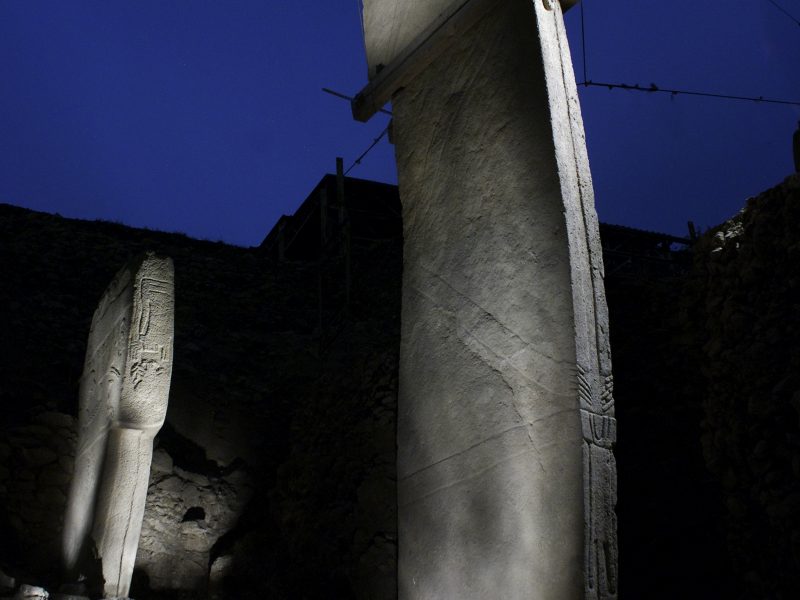
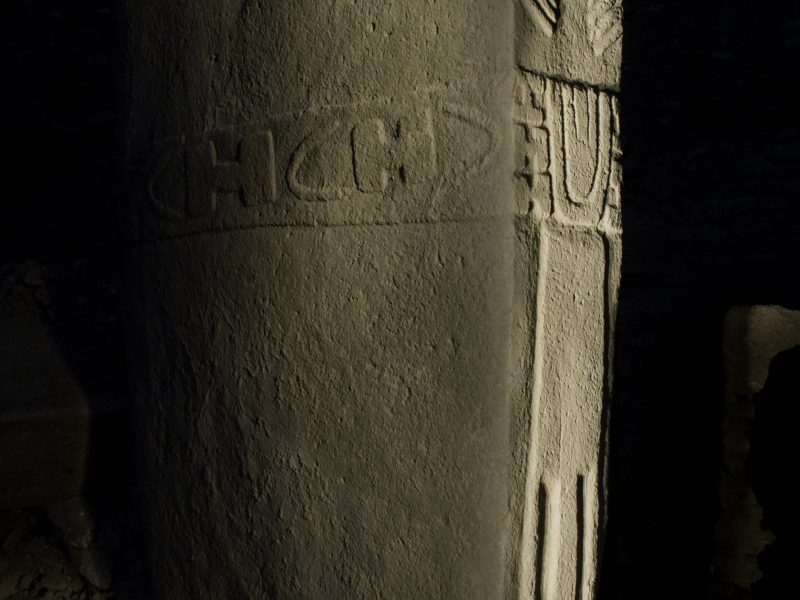
Amazing! Looking forward to see new telegrams. Thank you!
A very balanced view which takes full regard of our ignorance yet points up some of the features of the site which must have rendered it far more than a simple settlement for those who lived in the area. The anthropomorphic nature of the central pillars in each circle does seem to present the human form as central to whatever purpose it served, suggesting that the animal carvings on the encircling stones might in this sense be seen as subsidiary to humans, even if they were no ordinary humans. I do think it should have been made clear Urfa Man was not unearthed at the Gubekli Tepe excavations – according to Schmidt they were discovered during construction work in the city nearby.
Thanks a lot for your kind comment; really appreciating your input. It is true that the ‘Urfa Man’ statue was not found at Göbekli Tepe itself; thought I had made that clear, though, with my remark that this find was made “… during construction work in the area of the Pre-Pottery Neolithic site of Urfa-Yeni Yol.” (Urfa being the city nearby you are referring too). We did, however, also find a lot of stone heads very similar to the ‘Urfa Man’ statue – as pointed out in the text as well.
Sorry! Missed that reference to Urfa-Yeni Yol. I did read somewhere that the presence of the stone heads might be part of a PPN tradition in Anatolia/northern Mesopotamia, though earlier and indicate decapitation of skeletons as part of the ritual proceedings. Apparently they were found at the bases of pillars in each circle, suggesting deliberate placement.
No worries. Actually, you’re quite right regarding the PPN ‘skull cult’. We were discussing this in a couple of articles already – and also here on the blog as well: //dainstblog.com/2016/05/05/losing-your-head-at-gobekli-tepe
Mir ist bei all dem was ihr sagt wie so ihr die Pfeiler als anthropomorph bezeichnet, mich erinnern mich eher An Totempfähle in dem wiederum die einzelnen Klan Symbole integriert sind.
Der Gedanke, es hier mit den Symbolen und Aktivitäten bestimmter einzelner Clans zu tun zu haben, ist in der Tat verlockend. Und auch wenn wir insgesamt sehr zurückhaltend sind, was die Übertragung solch eher historisch-ethnologischer Elemente auf den prähistorischen Befund sind, diskutieren wir diese Möglichkeit durchaus im zitierten ZOrA-Artikel etwas ausführlicher.
Diese anthropomorphen Säulen hatten sicher auch eine funktionelle Aufgabe, z.B. als Säulen zum Tragen eines Holzbalkens oder Strohdaches o.ä. Da die Menschen im Neolithikum Jäger waren, kann ich mir vorstellen, dass sich künstlerisch ambitionierte Menschen damals einfach das in der Wildbahn Gesehene (also Wildtiere) auf den Säulen verewigt haben (wie in den Höhlen Europas).
Zu den H-förmigen Zeichen auf den Säulen kommt mir sofort der Gedanke, dass die bandförmige Aneinanderreihung der H-Zeichen auf der T-Säule in Höhe der Hände einen Gürtel darstellen könnte.
Vielleicht könnte das H-Zeichen auch eine stilisierte Spule/Spindel darstellen. Ich habe bei der englischen Anthropologin E.S. Drowers im Bericht “Peacock-Angel” (1941) über die Jesiden im Irak Zeichnungen von Tätowierungen jesidischer Frauen gesehen, die u.a. ebenfalls wie der Buchstabe H aussehen (allerdings noch mit zwei Punkten), die nach E.S. Drowers Ausführungen eine Spule/Spindel darstellen. Ich glaube schon, dass solche Sympole Jahrtausende in den jeweiligen autochthonen Kulturen weitergetragen werden und immer wieder auftauchen (als Tätowierung, auf Stein oder in Teppichen). Ebenfalls dieser stehende runde Stein mit großem Loch in der Mitte könnte doch ein Himmelsgestirn, also die Sonne darstellen, oder?! Alte Naturreligionen, wie z.B. die Jesiden, die auch in der Region um Urfa/Riha ansässig sind, sind im Grunde eine Naturreligion, bei der die Sonne und Anbetung der Sonne eine große Rolle spielt. Ebenfalls die Schlange oder der Skorpion tauchen bei ganz vielen jesidischen Schreinen in der Front neben der Eingangstür als Relief auf, dort haben sie wohl die Aufgabe von Wächterfiguren.
Vielen Dank für den Kommentar. In der Tat gibt es einige interessante historische und ethnologische Analogien, die uns durchaus helfen können, die Grenzen möglicher Interpretationen auszuloten und zu verschieben. Die große zeitliche Distanz macht es allerdings schwierig, hier tatsächlich direkte Anknüpfungspunkte oder gar Kontinuitäten auszumachen.
Auch die mögliche Deutung der T-Pfeiler als funktionale Dachstützen und die im Relief dargestellten Gürtel haben inzwischen natürlich Eingang in unsere Diskussion des Platzes gefunden (und sind auch hier auf dem Blog in entsprechenden Beiträge vertreten, die dies vertiefen und möglicherweise für Sie von Interesse sind, allen voran z.B. das die wesentlichsten Punkte zusammenfassende FAQ: //dainstblog.com/faq).
I watched all about this site on a History program. Absolutely fascinating. Thank you for this post.
Die zeitliche Distanz zwischen der Erbauung Göbekli Tepes zur Gegenwart ist natürlich enorm (ca. 10.000 Jahre), trotzdem ist es erstaunlich, daß z.B. das Widderhorn auch auf zahlreichen Kelims aus Anatolien auftaucht. Es ist wohl auf diesen Webereien/Wirkereien
ein Symbol für Männlichkeit, Wehrhaftigkeit und Fruchtbarkeit, wahrscheinlich weitergetragen von Mutter zu Tochter. Da sehe ich schon Analogien, wenn ich so ein Bucranium als Relief in Stein gemeißelt auf diesen Steinen und Säulen in Göbekli Tepe sehe. Es gibt in der Archäologie wohl auch den Begriff des kollektiven Gedächtnisses oder “oral history”. Es sind natürlich nur Spekulationen, Ethnologen könnten da sicher mehr zu sagen.
Hier noch ein interessanter link in Bezug auf Symbolik auf Kelims:
https://www.kilims.fr/symbolique-des-kilims